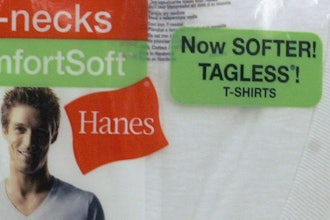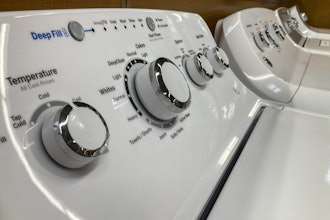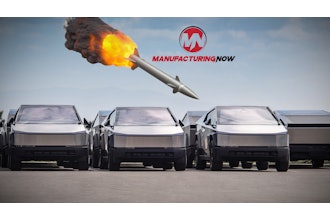Used in both industrial and commercial facilities, cord grips provide the means for passing cord or cable into an enclosure, through a bulkhead, or into a control device such as a switch. Grips prevent cable pull-out or premature fatigue because they secure the cable where it enters the enclosure, or where it terminates into a hardwired application. They can be used in both wet and dry locations since they seal the electrical connection against dirt, dust, oil, moisture or other corrosive materials. Typical applications include wiring enclosures, processing and material handling equipment, pumps, motors and various other machine tools or equipment.
In the 1940s, when cord grips were first used, standard product satisfied everybody's needs. As grip applications expanded, usage evolved to wet locations, severe environments, and into a growing range of equipment designs. Manufacturers were faced with customer needs that went beyond what standard products could provide. This led to more cord-grip choices, and customization. But the four basic criteria by which users select the proper cord grip for their application remain unchanged: size, thread type, style and attachments, and materials of construction.
Size: Which size cord grip to use depends on three things: the outside diameter (OD) of the cable; whether single or multiple cable terminations are required; and the size of the knockout or threaded opening. Cable OD is critical for two reasons. First, users size the hole into the enclosure or machine based on the OD. Second, knowing the cable OD enables users to select a cord grip offering the tightest initial fit to simplify installation (the fewer turns the better). To select the best cord grip for a single cable termination, the most common arrangement, requires users to know the OD of that cable. With multiple terminations, however, it's typical for all cable or conduit to be fed through a single hole instead of through individual holes to conserve enclosure space and save labor time. In this case, you need to know the OD for each cable, then select a cord grip that gives the tightest initial fit for all.
The last factor in determining cord grip size is the size of the knockout or threaded opening itself. If this is unknown because the enclosure hasn't been specified or designed, pick the smallest cord grip possible for the cable OD.
Thread type: If an application features a threaded opening, its thread type will determine what cord grip to use. Three thread types are used today: NPT, Pg or ISO Metric. If you don't know the thread type, check the spec sheet that came with the enclosure or equipment, or contact the manufacturer. Once you know this, select either a cord grip with the same threads as your enclosure or an adapter with one opening that matches your thread type, and the other opening(s) of a universal design that connects with just about anything.
Style and attachments: Most manufacturers offer two basic styles of grips: straight and 90°. Deciding between them is often based on several things: cable orientation and how the cable fits into the enclosure or system; spacing and turning radius of multiple terminations; space on the outside of the enclosure; and how a user wants a piece of equipment to look. Most manufacturers also offer varieties of wire mesh as a cord-grip attachment. Deciding if this is required often boils down to whether a specific application requires the cable or conduit to have protection from pull-out. Certain applications are more prone to needing wire mesh than others. High-traffic areas, for example, such as warehouses or shipping departments often use wire mesh since the cable can be easily hit or run over, pulling it out of its enclosure. Applications with high-flex or excessive vibration frequently use wire mesh to reduce arc of bend and extend cable life. Cable that is suspended overhead or dropped down into the work area usually requires wire mesh for additional support. For added protection of the actual electrical termination itself, wire mesh grips provide extra strength and security.
Material of construction: This is usually application-driven. There are five different materials to choose from:
• Diecast zinc: Well-suited for residential and commercial applications, but not recommended for industrial use due to its pliability, inferior tensile strength and threads that are soft and imprecise.
• Aluminum: The most common material of construction, aluminum offers excellent machine-ability, durability and performance. These grips are ideally suited for a wide variety of industrial applications like material handling, automotive plants or general manufacturing, but should not be used in severe or corrosive environments unless plated.
• Nylon: Excellent corrosion-resistance, lightweight and durable. Because nylon grips are molded instead of machined, they are ideal for use in damp environments and corrosive applications. Nylon comes in a variety of colors, but only a few sizes. • Steel: Better tensile strength than aluminum. Steel grips are usually zinc-chromium plated for enhanced rust-resistance and a better appearance. Available in a small number of grip sizes.
• Valox: Superior corrosion-resistance and suitable for use in FDA-mandated washdown environments. Valox is non-hydroscopic, meaning it won't absorb moisture. Grips made from valox are the most expensive, and are available only in a limited number of sizes.
• Stainless steel: Exceptional tensile strength and the highest levels of durability in severely corrosive environments, such as those filled with salt water, acids or chemicals. These types of grips typically are available in limited sizes.
Even with all these selection options, there are still applications better served by a customized solution. Although not all cord-grip manufacturers offer customization, those that do advise users to evaluate both standard and special options when developing a custom cord grip. Typical standard options include:
• Multiple-hole bushing: Used to save enclosure space. Two cables pass through this bushing, one for the grip and the other for the installation.
• Threading: Tapered threads are best suited to applications requiring a liquid-tight seal. Straight threads are typically used with a device that also has straight threads and doesn't need a liquid-tight seal, such as control equipment.
• Grommet materials: There are four different types of grommet material to choose from. Viton is ideal for highly corrosive environments, but for applications with high- temperatures silicone is recommended. Gaseous and petroleum-type environments require Buna-N grommets, whereas for a very broad base of industrial and commercial uses, a neoprene grommet works well. PVC is a low-cost alternative, but is stiffer and will dry out in outdoor environments.
• Wire mesh: Good for applications requiring added protection from cable pull-out or stress (as described previously).
• Locknuts and O-rings: Most manufacturers don't include locknuts with their grips, but is often desired. The need for an O-ring is related to the amount of moisture present in the application. When tightened down, O-rings provide an extra seal.
• Slit bushings: This type of bushing is used when the cable OD is smaller than the connector head that's either molded or affixed to the cable. This bushing enables a grip to be slipped over the connector, then tightened down to the smaller cable size.
• Cable style: Cord grips can be made to accommodate either round or flat cable.
There are also several special options available. These include three different types of plating materials electroless nickel, chrome, and hard-coat anodizing that offer enhanced corrosion-resistance and a better look. Threads can also be customized in situations where the standard thread is one length but where the grip will be used is either deeper or longer. There are also two additional types of construction material: nickel-plated brass and Delrin, a machineable non-metallic material like nylon.
Although cord grips are often viewed as commodity products, they are, in fact, integral to the successful operation of most industrial and commercial facilities. By understanding product options and design factors, you can select the very best cord grip for your operating environment.


















